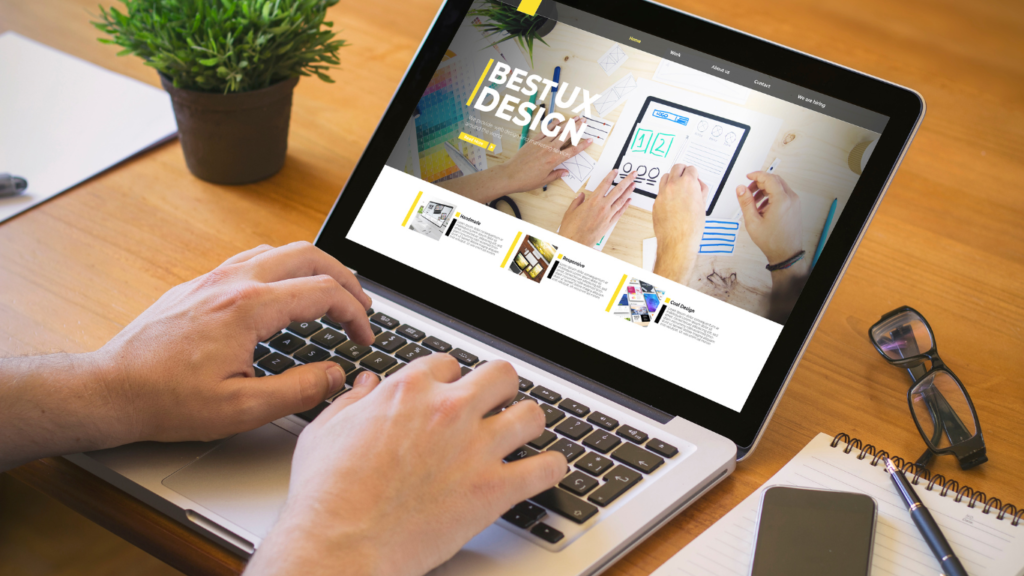
Web design is more than just making something look good—it’s about crafting an experience that resonates with users. As we edge closer to 2024, the way we think about and approach web design is evolving rapidly. If you want your website to stay ahead of the curve, it’s crucial to understand the trends that are shaping the future of this industry. This isn’t just about keeping up appearances; it’s about creating meaningful interactions that leave a lasting impact on your visitors.
1. AI and Automation: Personalizing User Experience Like Never Before
Remember when AI seemed like something out of a sci-fi movie? Well, it’s here, and it’s becoming an indispensable tool in web design. In 2024, AI Website Builders aren’t just a fancy buzzword—it’s the backbone of creating deeply personalized user experiences.
Imagine visiting a website that adapts to your preferences in real-time, showing you content that feels tailor-made just for you. AI can analyze your behavior—what you click on, how long you linger on a page—and adjust what you see accordingly. It’s like having a conversation with a website that actually listens to you. This isn’t just futuristic; it’s happening now, and it’s going to become the norm.
What does this mean for you? It means that as a web designer or business owner, you have the tools to create more engaging, interactive, and effective websites. By harnessing AI, you can anticipate your visitors’ needs and give them exactly what they’re looking for—sometimes before they even realize they want it.
2. Advanced Animations and Micro-Interactions: Making Websites Feel Alive
Animations on websites aren’t new, but how they’re used is changing. The days of flashy, over-the-top animations are fading. In 2024, it’s all about subtlety and purpose—small, almost imperceptible animations that enhance the user experience rather than distract from it.
Think about the satisfaction of seeing a button slightly change color when you hover over it or a notification that smoothly fades in and out. These micro-interactions, though small, play a massive role in how users perceive your website. They make the experience feel responsive, intuitive, and—most importantly—human.
As you plan your website designs, don’t overlook these details. These tiny touches can make your website feel less like a static page and more like a dynamic, responsive tool designed specifically for your users.
3. No-Code and Low-Code Platforms: Empowering Everyone to Build Websites
You no longer need to be a coding wizard to create a website. No-code and low-code platforms are democratizing web design, making it accessible to everyone. In 2024, these platforms are expected to become even more sophisticated, offering powerful tools that anyone can use to build a professional website.
For entrepreneurs, small business owners, or anyone with a vision, this is a game-changer. You can take your idea from concept to reality without needing to hire a developer or learn to code. These platforms are breaking down barriers, allowing more people to bring their creative ideas to life on the web.
However, this doesn’t mean that the role of web designers is diminishing. On the contrary, designers who embrace these tools can focus more on creativity and strategy rather than getting bogged down in the technicalities. The ability to prototype quickly, test ideas, and iterate will allow for more innovation and better user experiences.
4. Sustainable and Eco-Friendly Design: Meeting the Demand for Greener Web Practices
Sustainability isn’t just a trend—it’s a necessity. As awareness of environmental issues grows, so does the demand for eco-friendly web practices. In 2024, expect to see a significant push towards greener web design.
But what does a sustainable website look like? It’s a site that minimizes energy consumption, uses efficient coding practices, and is hosted on servers powered by renewable energy. It’s about making smart choices that reduce your digital carbon footprint.
For users, knowing that a website is designed with the environment in mind can be a deciding factor in whether they engage with your brand. It’s not just about doing the right thing; it’s about appealing to a growing audience of eco-conscious consumers. If you’re looking to future-proof your website, consider how you can make it more sustainable.

5. Accessibility: Designing for Everyone, Not Just the Majority
Accessibility is no longer a nice-to-have; it’s a must-have. As the web becomes more integral to daily life, ensuring that everyone—regardless of ability—can use your website is crucial. In 2024, accessibility is expected to be at the forefront of web design.
Designing for accessibility means thinking about users who may have different needs, whether that’s visual impairments, hearing difficulties, or motor challenges. It’s about creating a website that’s inclusive and usable by all.
But accessibility isn’t just about compliance or ticking a box. It’s about empathy. It’s about recognizing that the web should be a space for everyone. When you design with accessibility in mind, you’re not just avoiding potential legal issues—you’re also opening your site up to a broader audience. And let’s not forget, search engines like Google favor accessible websites, so it’s a win-win situation.
Conclusion
Web design in 2024 is about more than just aesthetics; it’s about creating meaningful, engaging, and inclusive experiences. By embracing trends like AI, micro-interactions, no-code platforms, sustainability, and accessibility, you can build websites that not only look great but also serve the needs of all your users.
The future of web design is exciting, and those who stay ahead of these trends will be the ones leading the charge. As you plan your next web project, keep these trends in mind—they’re not just passing fads, but the building blocks of a better, more user-centric web.
